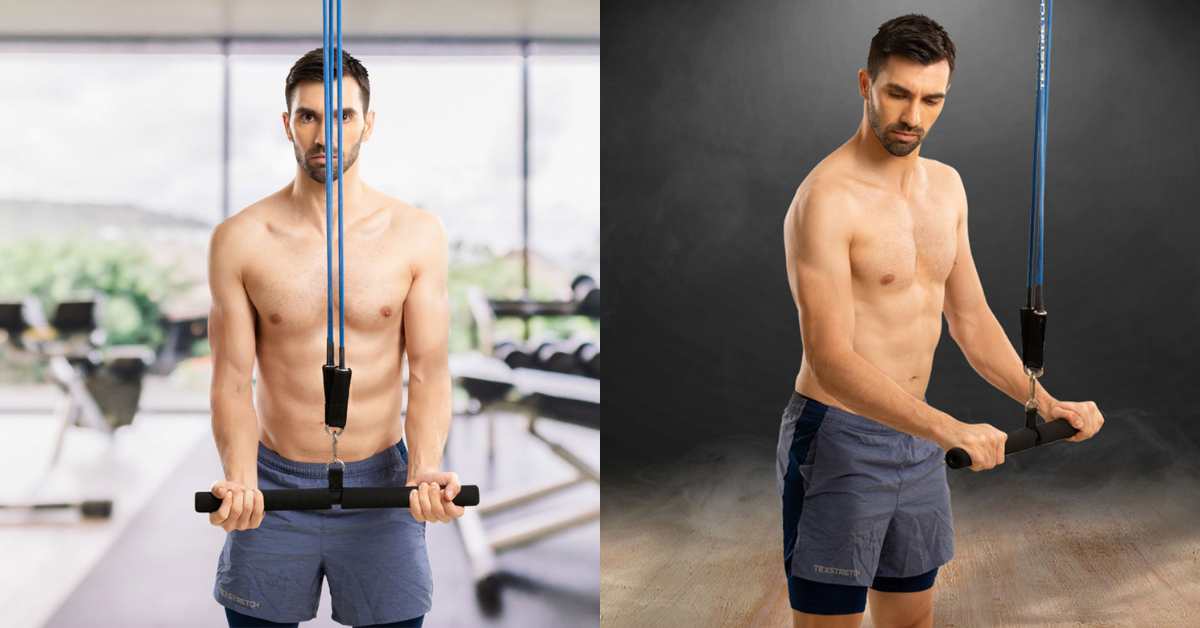How to Train Safely with a Roller Stretcher
Dec 18, 2024

Training with a roller stretcher is an excellent way to improve flexibility, relieve muscle tension, and enhance overall fitness. This versatile tool has become a popular choice for athletes, gym-goers, and fitness enthusiasts alike. However, like any exercise equipment, it’s essential to use it correctly to avoid injuries and maximize benefits. In this article, we will provide a comprehensive guide on how to train safely with a roller stretcher while achieving your fitness goals.
What is a Roller Stretcher?
A roller stretcher is a cylindrical exercise tool made from foam or other sturdy materials. It is designed to help with stretching, muscle recovery, and improving flexibility. This tool works by applying pressure to targeted areas of the body, promoting blood flow and reducing muscle tightness. Whether you’re a beginner or an advanced fitness enthusiast, a roller stretcher can complement your workout routine and aid in recovery.
Benefits of Training with a Roller Stretcher
Using a roller stretcher offers several physical and mental health benefits, including:
Improved Flexibility: Regular use can lengthen muscles and improve the range of motion in your joints.
Enhanced Recovery: Rolling after workouts helps reduce muscle soreness and accelerates recovery by increasing circulation.
Stress Relief: The pressure applied during rolling can release built-up tension in muscles, helping you relax.
Injury Prevention: Consistent use helps correct muscle imbalances and prevents injuries related to tight or overworked muscles.
Better Posture: A roller stretcher can alleviate tightness in the back, shoulders, and hips, promoting proper alignment.
Preparing for a Safe Roller Stretcher Session
Before incorporating a roller stretcher into your routine, follow these preparatory steps:
Warm Up First: Always begin with a 5-10 minute warm-up to increase blood flow and loosen up your muscles. Dynamic stretches or light cardio activities like jogging or jumping jacks are excellent options.
Choose the Right Roller Stretcher: Rollers come in different densities—soft rollers are suitable for beginners or those with sensitive muscles, while firmer rollers provide a deeper massage for advanced users.
Wear Comfortable Clothing: Opt for flexible, breathable workout clothes that allow you to move freely without restriction.
Set Up a Safe Space: Ensure you have enough room to stretch out comfortably. A yoga mat can provide extra cushioning and prevent the roller from slipping.
Essential Techniques for Safe Training
To train safely with a roller stretcher, it’s crucial to use the correct techniques. Below are some key exercises and safety tips:
1. Lower Back Roll
Purpose: Relieves tension in the lower back and improves posture.
How to Do It:
Sit on the ground with the roller behind you.
Lie back so the roller is under your lower back.
Cross your arms over your chest or place your hands behind your head for support.
Slowly roll back and forth, focusing on the lower back area.
Safety Tip: Avoid rolling directly on the spine to prevent discomfort or injury. Focus on the muscles around the spine instead.
2. Hamstring Roll
Purpose: Reduces tightness in the back of the thighs.
How to Do It:
Sit on the floor with your legs extended and the roller under your hamstrings.
Place your hands on the floor behind you for support.
Lift your hips slightly off the ground and roll back and forth from your glutes to just above the knees.
Safety Tip: Keep your movements slow and controlled to target the muscles effectively.
3. Quads Roll
Purpose: Loosens tight quadriceps and promotes better knee mobility.
How to Do It:
Lie face down with the roller positioned under your thighs.
Support your upper body with your forearms.
Roll from your hips to just above your knees.
Safety Tip: Avoid putting excessive pressure on the knee joint by focusing on the muscle tissue above the knee.
4. IT Band Roll
Purpose: Reduces tightness along the outer thigh and prevents knee pain.
How to Do It:
Lie on your side with the roller under your outer thigh.
Use your forearm and opposite leg for support.
Roll from your hip to just above the knee.
Safety Tip: Rolling the IT band can be intense, so apply moderate pressure and avoid staying on one spot for too long.
Common Mistakes to Avoid
Rolling Too Quickly: Fast movements don’t allow muscles to relax or benefit from the pressure. Always roll slowly and deliberately.
Spending Too Much Time on One Spot: Prolonged pressure on a single area can lead to bruising or discomfort. Limit rolling each area to 30-60 seconds.
Ignoring Pain Signals: If you feel sharp or intense pain, stop immediately and reassess your technique. Rolling should feel like a deep massage, not pain.
Bad Posture: Ensure your body is properly aligned during each exercise to avoid unnecessary strain.
Integrating the Roller Stretcher into Your Routine
Incorporate the roller stretcher into your fitness routine for maximum results:
Pre-Workout: Use the roller to warm up muscles and increase blood flow before strength training or cardio sessions.
Post-Workout: Focus on tight or sore muscles to promote recovery and prevent stiffness.
Daily Stretching: Even on rest days, rolling can help maintain flexibility and prevent tension buildup.
When to Avoid Using a Roller Stretcher
While a roller stretcher is generally safe, there are certain situations where its use should be avoided:
Injury or Inflammation: Do not roll over acute injuries, swollen areas, or fractures.
Chronic Conditions: If you have medical conditions like osteoporosis or varicose veins, consult a healthcare professional before using a roller stretcher.
Pregnancy: Pregnant individuals should avoid rolling over the abdomen or consult their doctor for guidance.
Final Thoughts
Training safely with a roller stretcher is all about proper technique, listening to your body, and consistent practice. By following the tips and exercises outlined in this guide, you can enjoy the numerous benefits of this versatile tool while minimizing the risk of injury. Whether you’re using it for recovery, flexibility, or overall fitness, a roller stretcher is a valuable addition to any workout routine. Remember, safety comes first—so roll with care and confidence!